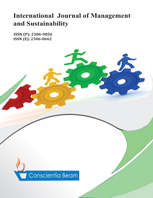Challenges for Sustainability in Critical Raw Material Assessments
DOI:
https://doi.org/10.18488/journal.11.2018.73.156.179Abstract
The commonly-used methodologies for raw material criticality assessments produce lists based on economic parameters. However, they do not provide qualitative guidance or recommendations as to how to reduce criticality. Paradoxically, publishing these lists impacts the system in a way that can make critical resources become even more critical, because markets may react by increasing prices for critical raw materials, and conflict for these resources may increase. We propose a complementary methodology, System Dynamics Modelling, which provides better guidance for policy makers because of its insights into the driving forces behind the criticality of raw materials. Also, this methodology allows us to take into account the biophysical limits and the social dynamics which underpin the system, and thus enables us to understand the context in which raw materials become critical. The clarification of the drivers of criticality of raw materials, provided by our research method, can enhance the recommendations and guidance for policy- and decision-makers to respond to warning signals in their management. The applicability of our approach is illustrated by two case studies, on phosphorus and indium. We conclude that the externalities (social and environmental) of raw material extraction, both for production and consumption, should be considered by policy makers in order to account for the true cost of critical raw materials.

